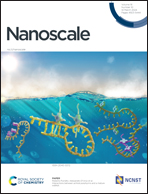Chiral nanomaterials in tissue engineering
Abstract
Addressing significant medical challenges arising from tissue damage and organ failure, the field of tissue engineering has evolved to provide revolutionary approaches for regenerating functional tissues and organs. This involves employing various techniques, including the development and application of novel nanomaterials. Among them, chiral nanomaterials comprising non-superimposable nanostructures with their mirror images have recently emerged as innovative biomaterial candidates to guide tissue regeneration due to their unique characteristics. Chiral nanomaterials including chiral fibre supramolecular hydrogels, polymer-based chiral materials, self-assembling peptides, chiral-patterned surfaces, and the recently developed intrinsically chiroptical nanoparticles have demonstrated remarkable ability to regulate biological processes through routes such as enantioselective catalysis and enhanced antibacterial activity. Despite several recent reviews on chiral nanomaterials, limited attention has been given to the specific potential of these materials in facilitating tissue regeneration processes. Thus, this timely review aims to fill this gap by exploring the fundamental characteristics of chiral nanomaterials, including their chiroptical activities and analytical techniques. Also, the recent advancements in incorporating these materials in tissue engineering applications are highlighted. The review concludes by critically discussing the outlook of utilizing chiral nanomaterials in guiding future strategies for tissue engineering design.

- This article is part of the themed collection: Recent Review Articles


 Please wait while we load your content...
Please wait while we load your content...